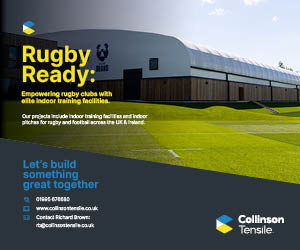
The process of aging in sports has changed. Years ago, most athletes would typically begin to decline around the age of 30. At this point, however? Notably, artists are experiencing their breakthrough moments. Serena Williams, Cristiano Ronaldo, and LeBron James are leading the way in changing what staying power is all about. They are not only living for longer as athletes; they are enjoying their accomplishments.
How They Keep Going
Athletes’ sometimes different outcomes can be explained by their attitude and how they see their sports career. The subject is frequently discussed by veterans: maintaining focus, performing consistently, and recovering mentally. That’s the kind of work that is not listed under the priority statistics. It helps a lot of them stay involved much longer than most. Tools like the MelBet app provide fans in Indonesia with a closer look at how athletes perform over time, tracking trends that help explain their long careers.
It’s not a miracle. It’s routine. Veteran athletes train smarter, not just harder. They listen to their bodies, they adjust their schedules, and they stay hungry. More importantly, they know when to slow down and when to push.
Aging Gracefully Is a Skill
Athletes change the way they play as they get older. Longevity in the competition is now more important than effort to beat the competition. Intelligent decision-making replaces making fast moves. Whether you’re watching live or catching up on highlights while spinning the reels on a slot online, you’ll spot the difference. It’s in the sharp decisions, the clean movement, the stillness in high-pressure moments. That’s wisdom at play, and it ages well.
Guessing moves are no longer used in favor of making decisions based on thought. There was one player who consistently sprinted at great speed throughout the entire game. He is now helping the team by passing perfectly and playing in the right spots. After perfecting dunks, the player has now learned to hit precise three-pointers and to set amazing screens on the court.
This type of mastery is different from the others. A company that places importance on what it has done previously. More Indonesian coaches are reconsidering their training programmes, putting less stress on the heart and more time into recovering. Getting flexible, eating healthy foods, and getting enough sleep are now necessary, just like doing exercises with weights.
The Role of Tech: Not Just for Startups
Let’s be real—technology is the real game-changer here. From smart watches to GPS trackers and oxygen-monitoring wearables, data now flows with every sprint, rep, and heartbeat. That info lets players—and their teams—see when something’s off before it turns into injury.
And it’s not just high-end leagues that are cashing in. Even semi-pro athletes across Indonesia are using apps and affordable gadgets to track performance and recovery. Coaches review slow-motion replays, adjust form in real time, and map out training programs with AI-backed input. It’s part innovation, part self-preservation.
Mid-career athletes are also embracing therapies their younger selves might’ve mocked—think cryotherapy, red light treatments, deep tissue recovery, and customized sleep tracking. They may not love ice baths, but they love what those ice baths give back: another season, another shot at gold.
Eating and Training Like It’s a Long-Term Investment
Gone are the days when post-game meals meant whatever looked good. Nutrition is now a strategy. Anti-inflammatory foods, personal chefs, and diet logs make a difference. Load management isn’t just about minutes played—it’s about what fuels those minutes.
And that’s showing results in leagues across Asia. Athletes in Indonesia are already turning to dietitians and strength coaches to tailor their routines to support long-term performance, rather than short-term gains.
At this point, avoiding injury is almost an art. Regular MRIs, movement screens, and flexibility routines help players dodge the kind of setbacks that can cut careers short. Longevity isn’t a surprise anymore—it’s a goal with a blueprint.
Who’s Doing It Right?
Take a look at names that defy retirement. Think of Zlatan Ibrahimović defying gravity well into his 40s. Or Novak Djokovic, still outlasting opponents half his age. These athletes evolve.
They adjust their goals, routines, and even roles. It’s less about the highlight reel and more about contributing meaningfully. Some become player-coaches. Others turn into mentors. All of them adapt—and that’s the real secret.
For Indonesian Fans and Young Athletes Alike
What can local talent take from all this? Simple. Start thinking long-term. A career doesn’t have to flame out by 28. If you’re willing to plan, listen to your body, and evolve your game, there’s no reason you can’t compete well into your 30s—or beyond. And fans? Next time you catch a match, watch how the veterans move. You’ll notice they don’t waste effort. They glide instead of sprint. They react just a bit earlier than the others. That’s not luck—it’s earned.
Final Thoughts
Sports may celebrate youth, but they respect longevity. Staying in the game takes more than just talent. It requires wisdom, restraint, and a willingness to adapt over time. In Indonesia and around the globe, today’s athletes have more tools than ever to keep going—and they’re using them. The future doesn’t belong only to the fast. It belongs to the ones who figure out how to keep showing up, season after season.


International Rugby
Immanuel Feyi-Waboso’s red card anguish in England loss to France

British and Irish Lions
Finn Russell: Johnny Sexton and I are getting on well in British and Irish Lions environment

International Rugby
Tom Willis can’t wait for Argentina challenge


















You must be logged in to post a comment Login